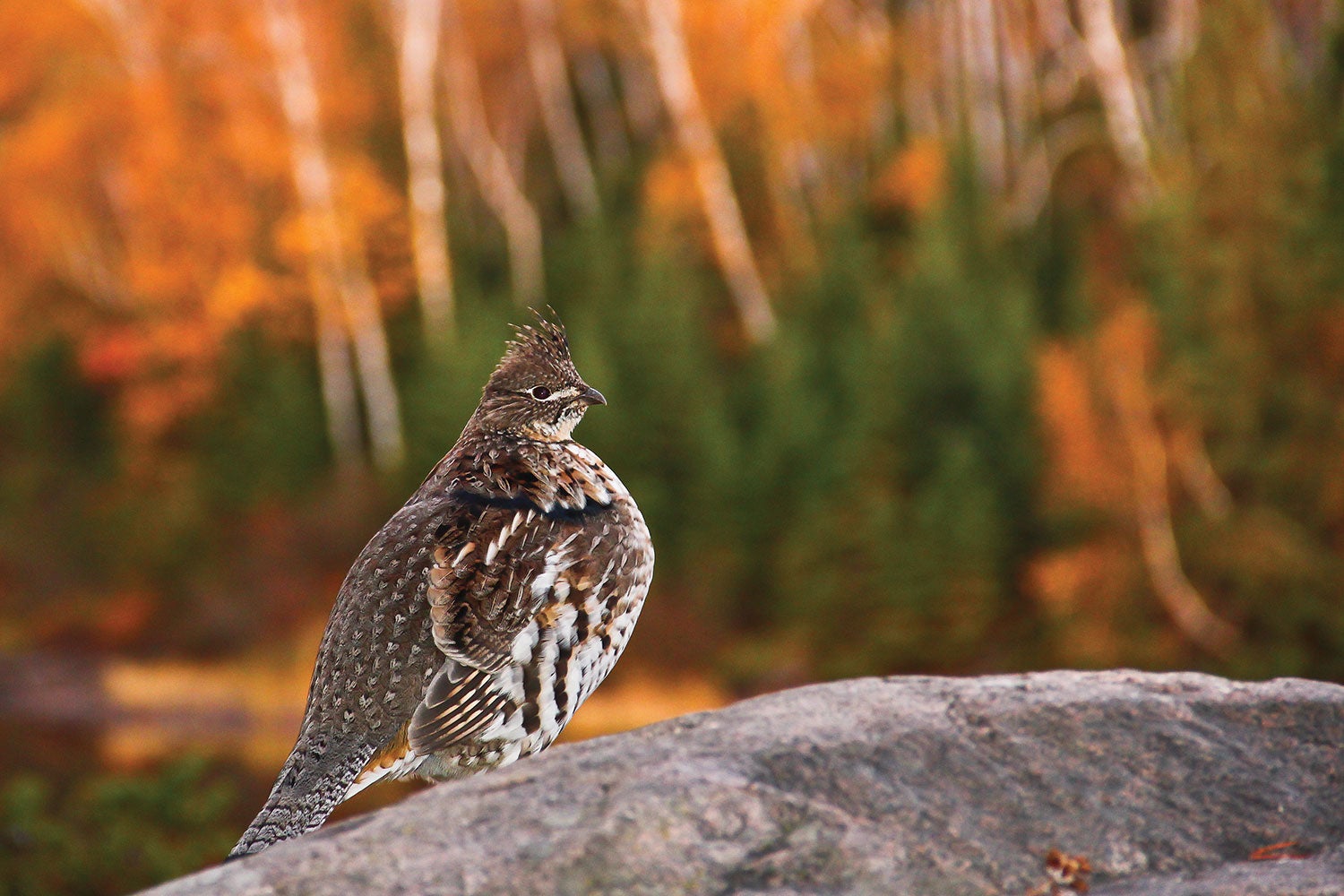Hiking is for the Birds

'Dawn M. LaPointe'
An eruption of flapping shatters the silence of a late afternoon hike on the Appalachian Trail outside of Hot Springs, North Carolina. Just a few feet down the path, a ruffed grouse takes sudden flight, hurtling its teapot-size body skyward in a fury of wings and feathers.
Before I can raise my binoculars, the bird glides out of sight into a thicket of conifer branches. But I saw where it landed. Got it, I think. Circling around the base of the tree it flew into, I scan the lower limbs hoping for a better glimpse of the notoriously elusive bird. My focus is the grouse, but I can still hear the hikers behind me breezing by, eager to make their miles.
Birding on the trail requires a different set of priorities. Distance goals disappear in exchange for a slower pace and more attention to the sights and sounds of the forest—a flash of movement at the edge of your field of vision, an unfamiliar song, a rustling in a bush. Each hint of animal motion requires a pause, a wait, a listen. It amounts to a walking meditation on the life all around you, rather than just figuring out where to step.
Because birds fly, sing, and are often decked out in flashy plumage, they serve as the greeters of the natural world. A hawk soaring past an office window can rip your focus away from the blue glow of the computer screen. That’s how I got hooked. Now I’m hopeless.
At its core, the allure of birding is equal parts the chase and the thrill of discovery. At least, that’s what I tell myself as I make my third lap around the tree, with not so much as a grouse feather in sight.
The ruffed grouse isn’t particularly threatened as a species, but that doesn’t make one easy to find. In western North Carolina, it prefers steep and overgrown terrain, where the bird’s finely patterned feathers flecked with reddish-brown and black help it blend in with the leaf litter and tree trunks. You could be looking right at one and not know it.
And so I circle the tree, hoping for a clear look to accomplish my goal for this two-day trek to Max Patch, a famous bald about halfway through North Carolina’s 300-mile portion of the AT. I don’t want to leave without getting a better glimpse.
That’s just the kind of mindset that can put a backpacker-turned-birder behind schedule and on the bad side of a more ambitious partner. In this case, that’s my wife Alice, who is equal parts curious and anxious to keep moving. Still, we stumble farther off trail, binoculars pointed skyward, once we decide the bird has left the tree.
An hour later, as the last rays of sunlight turn golden, the grouse is nowhere to be seen. But as we turn to leave, the air is suddenly broken by a high-pitched, whinnying cry—WUK WUK WUK. A pileated woodpecker, North America’s version of the pterodactyl, tears through the understory, followed closely by two squawking blue jays. Behind us, off in the distance, we hear the drumming of a male grouse. As another hiker trudges by on the trail, we turn around like a pair of hens and follow the call. Camp can wait a bit longer.